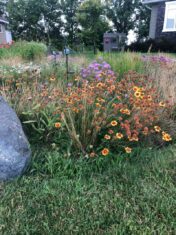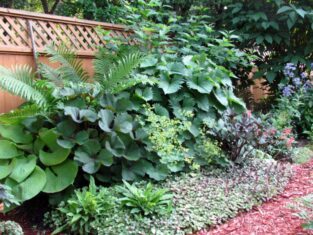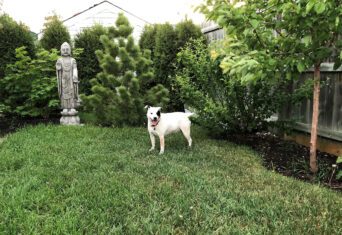
Planting spring-blooming bulbs can be as easy as tossing them into a shallow hole, throwing some soil over them and walking away. And it can also be frustrating to watch squirrels unearth the buried treasures and make a good meal of them. Just a few simple preparations will help you get the best from the bulb planting you do now for next spring’s show.
When to plant
Small minor bulbs like snowdrops, winter aconites, crocus and Siberian squills should be planted soon as possible, and certainly before the end of October. Leaving them out of soil for an extended time causes premature sprouting and dissipates stored energy needed for spring bloom.
Larger tulip and narcissus bulbs can be held in a cool, dark garage (not indoors) to plant in late autumn. Warm soil can stimulate bulbs to sprout in fall, something to avoid. If warm days persist through September and October, it may be necessary to hold off planting most large bulbs until the weather has chilled in November. The soil temperature should be cooled to below 15°C; chilly nights indicate the soil is cooling. If you don’t have a soil thermometer, wait until nights are consistently in the range of 4 to 8°C.
Bulb planting depth
The traditional rule has been to plant bulbs at a depth three times their height, measured from the bottom of the bulbs. Consequently, a tulip bulb standing two inches (5 cm) tall should be buried six inches (15 cm) deep, and a one-inch (2.5-cm) crocus would be buried three inches (8 cm) deep. That’s a fairly good guideline, but there are circumstances when planting slightly deeper might better.
Most spring bulbs are hardy to Zone 4. If planting in colder regions, it’s safer to plant bulbs two inches (5 cm) deeper than recommended to ensure they have adequate insulation from the coldest frost. A layer of leaves and conifer boughs laid over the bulbs will also help hold insulating snow in place all winter. Remember to pull the covering off in early spring to allow the sun to warm the soil.
Good drainage
Bulbs require good drainage to prevent them from rotting and developing fungal diseases. Sandy soil drains rapidly and favours good bulb health, but heavy clay soil holds water and promotes the growth of pathogens. To prevent the buildup of excessive moisture around bulbs, amend the immediate planting area with coarse builder’s sand to a depth of 10 inches (25 cm). Plant the bulbs into the amended soil, gently firming the soil over them. They will have well-drained soil on all sides, which will prevent excess water from pooling around them.
Squirrel protection
Avoid setting the bulbs on the soil while you work; keep them in a paper bag or other container until they go into their planting holes. Also, don’t allow any of the papery tunic covering them to flake off and remain on the soil. (No sense leaving delicious hints lying about to attract attention.)
Squirrels search the ground for signs of freshly disturbed soil and then dig for a reward. The marks you leave behind after planting bulbs are strong indicators that something delicious is buried underneath and they’ll quickly take advantage of the free meal. The final step in planting a cluster of bulbs is to disguise your work with a thorough drenching from a watering can (not a strong hose stream that could dislodge soil over the bulbs). Be sure there is enough water to erase the marks of your trowel and hands, creating a slightly muddy surface.
Follow this with a four-inch (10-cm) layer of leaves on the soil over the bulb planting area. The leaves can be left in place until the soil freezes or all winter to help conceal your buried treasure. Pull back some of the leaves in early spring (leaving a light covering of scattered leaves in place), allowing sunlight to warm the soil. Although there’s no certainty when dealing with persistent wild animals, this is usually enough to fool a squirrel.









Re Squirrels and bulbs: I have had some success by covering the groups of bulbs with a square of chicken wire just big enough to cover the top of the bulbs before I put the needed inches of soil over them.
We found a hack on the internet to protect tulip bulbs from squirrels and raccoons etc. Using it for last fall really helped.
After planting the bulbs, just insert some throw away plastic forks with the pointy side up and the handle in the soil. This prevents intruders walking and digging up the bulbs.
Would’ve uploaded a pic if that was possible
Thank you for this valuable tips. Yes the depth in which you are planting bulbs should be done carefully because if you are planting bulb deep inside the soil it won’t be able to get enough sunlight and water.
Hi there – I have some Hyacinth bulbs that I bought for forcing. I have not done this before and would like some direction as to how and when to plant.
Hi Kim: If you have the Fall Issue of Garden Making, turn to pages 74 and 75. There’s a story by Laura Langston on how to force all sorts of bulbs. If you don’t have the issue, here’s a brief rundown on how to force hyacinths: If the bulbs have been pre-chilled (check the label or where you ordered them from), they will bloom in 3 to 4 weeks after potting up. Fill a container that has drainage holes with moist potting soil. Plant so the tip of the bulb is just above soil level. Place the container in bright light and keep the soil moist. If the bulbs have not been pre-chilled, plant as described and then place in a cool, dark location (cold cellar, basement, old refrigerator) for 12 to 14 weeks. When you notice growth, move to bright light; they should bloom in 3 to 4 weeks. Alternatively, you can start a hyacinth bulb in water. Place the bulb in a narrow-necked container that will hold the bulb upright, near the top. Fill the container with water to just below the base of the bulb (water should not touch the base of the bulb). Hyacinths forced in water usually bloom in 2 to 3 weeks. Good luck!